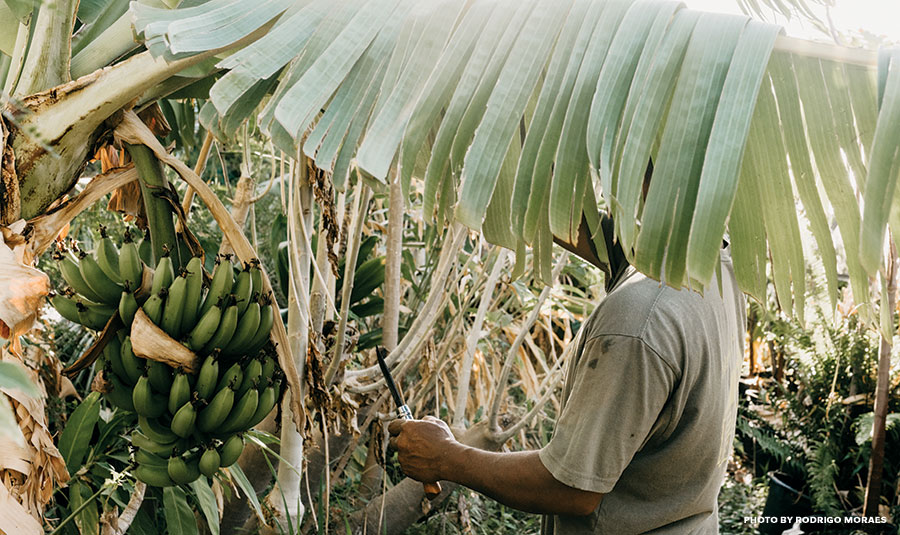
Of those still around, Pahia cultivates nearly two-dozen heirloom strains, including mana ‘ulu, the popular Maui lehua, and the rare ‘ele‘ele naioea—a black-stemmed cultivar that produces coveted red poi. When fellow farmers come calling, Pahia is happy to share his cultural wealth.
“Besides growing products for our needs, we’re . . . teaching people the different varieties of kalo, how to identify it, how to prepare it and cook it, as well as helping other farmers thrive,” he says. “That’s how we’re going to keep the culture alive.”
Pahia asserts that because of ongoing water disputes, the future of large-scale kalo farming on Maui will likely be in mala kalo (dryland production using drip irrigation), versus lo‘i kalo (wetland methods that continuously flood each kalo patch).
“We’re already struggling to get sufficient water flows,” he says, adding that the cost of water is another limiting factor for lo‘i kalo. “Now, if we go dryland, we can use water more efficiently and grow a lot more.”
Pahia notes that he and his lo‘i kalo farmer friends sometimes compare methods.
“There’s a misconception that dryland taro is junk,” says Pahia. “I understand why, because a lot of folks don’t grow it correctly. I always remind people that our kūpuna never grew taro to see which one was better than the other. They grew it to feed people—big difference.”





